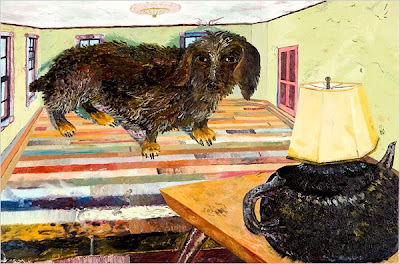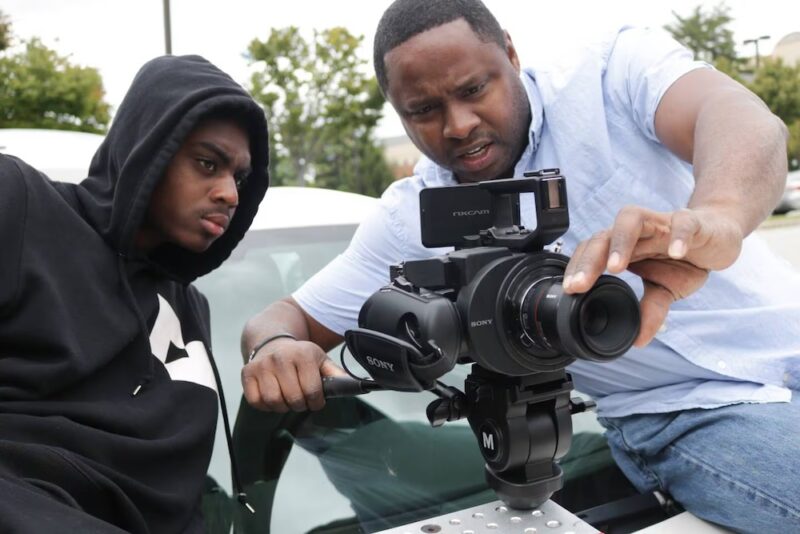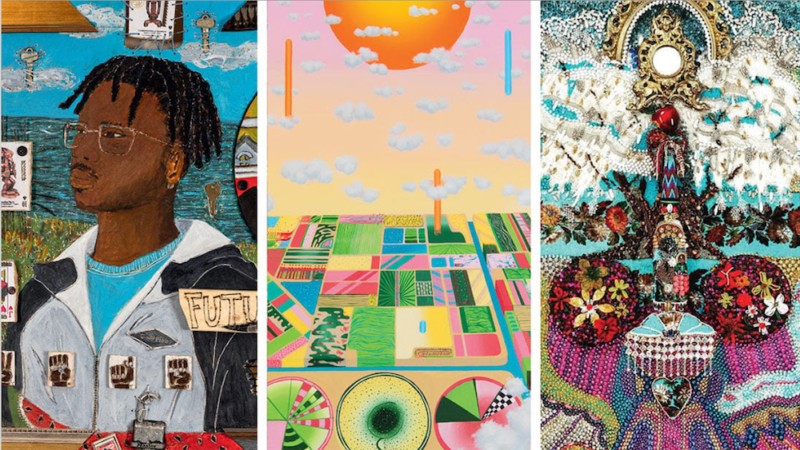FEW modern myths about art have been as persistent or as annoying as the so-called death of painting. Unless, of course, it is the belief that abstract and representational painting are oil and water, never to meet as one.
The two notions are related. The Modernist insistence on the separation of representation and abstraction robbed painting of essential vitality. Both notions have their well-known advocates. And both, in my mind seem, well, very 20th century.
Pictorial communication — signs, symbols, images and colors on a flat surface — is one of the oldest and richest of human inventions, like writing or music. It started on rocks and the surfaces of clay pots and in the woven threads of textiles, then moved to walls, wood panels, copper and canvas. It now includes plasma screens, Photoshop and graphic novels. Even so, paint on a portable surface remains one of the most efficient and intimate means of self-expression.
As for representation and abstraction, historically and perceptually they have usually been inseparable. Paintings — like all art — tend to get and hold our attention through their abstract, or formal, energy. But even abstract paintings have representational qualities; the human brain cannot help but impart meaning to form.
There have been moments of dazzling balance between the representational and the abstract — for example, Byzantine mosaics; pre-Columbian and American Indian textiles and ceramics; Japanese screens; Mughal painting; and post-Impressionism.
Painting may be in a similar place right now, fomented mostly, but not always, by young painters who have emerged in the last decade. They feel freer to paint what they want than at any time since the 1930s, or maybe even the 1890s, when post-Impressionism was at its height.
In the late 19th century painting was being radically changed by a series of artistic explosions — the newly abstracted figuration of post-Impressionists from van Gogh to Ensor; the extremes of color favored by the Fauves, like the young Matisse, and German Expressionists, like Kirchner; the shattering of representational form by Cubism and Futurism; and finally the flowering of abstraction itself in the work of Malevich and Mondrian.
By the 1970s, thanks largely to formalist critics like Clement Greenberg and Donald Judd, painting had been flattened and emptied of figures, subject matter and illusionistic space. It was also superseded, it seemed, by the explosion of post-Minimalism’s multiple mediums. But a kind of figure envy ensued: How could painters look at the figures in much of the video, body and performance art and not think, “I want a piece of that”? By the ’80s painting was creeping back, largely because painters like Sigmar Polke, David Salle and Julian Schnabel started pitting representation against abstraction, albeit self-consciously and often ironically.
But with each generation of painters, the authority of Greenberg and Judd pales while the history of the pictorial expands, revealing new possibilities for scholars, curators and artists alike. It seems noteworthy that Robert Rosenblum’s startling “1900: Art at the Crossroads,” a revisionist juxtaposition of modernist and academic painting, opened at the Guggenheim Museum exactly 10 years ago this fall.
Yet old habits die hard. No less a personage than Klaus Biesenbach, the Museum of Modern Art’s new chief curator at large, recently told The Art Newspaper that he preferred the phrase “contemporary practice” to “contemporary art” in order to include fashion, film, design and more. That doesn’t bode well for a phrase like “contemporary painting.”
But what really is questionable, and passé, is the implied ranking of art mediums and the leaving of some of them for dead. None of them ever really, ultimately have much of a monopoly on quality. And something else greatly reduces the chances of the death of painting: too many people — most obviously women — are just beginning to make their mark with the medium and are becoming active in its public dialogue.
What follows is a sampling of the post-abstract representational painters who have emerged since 2000.




